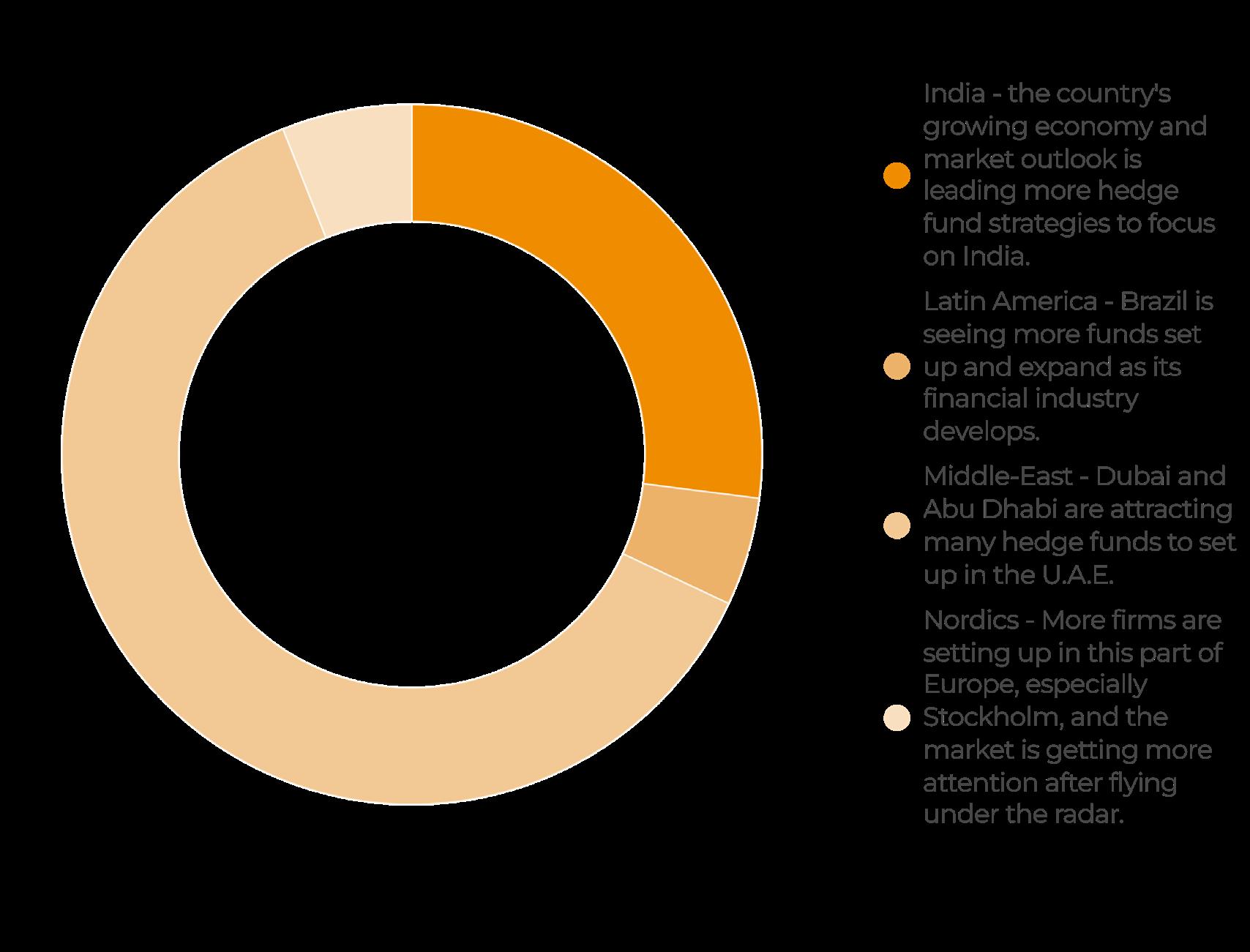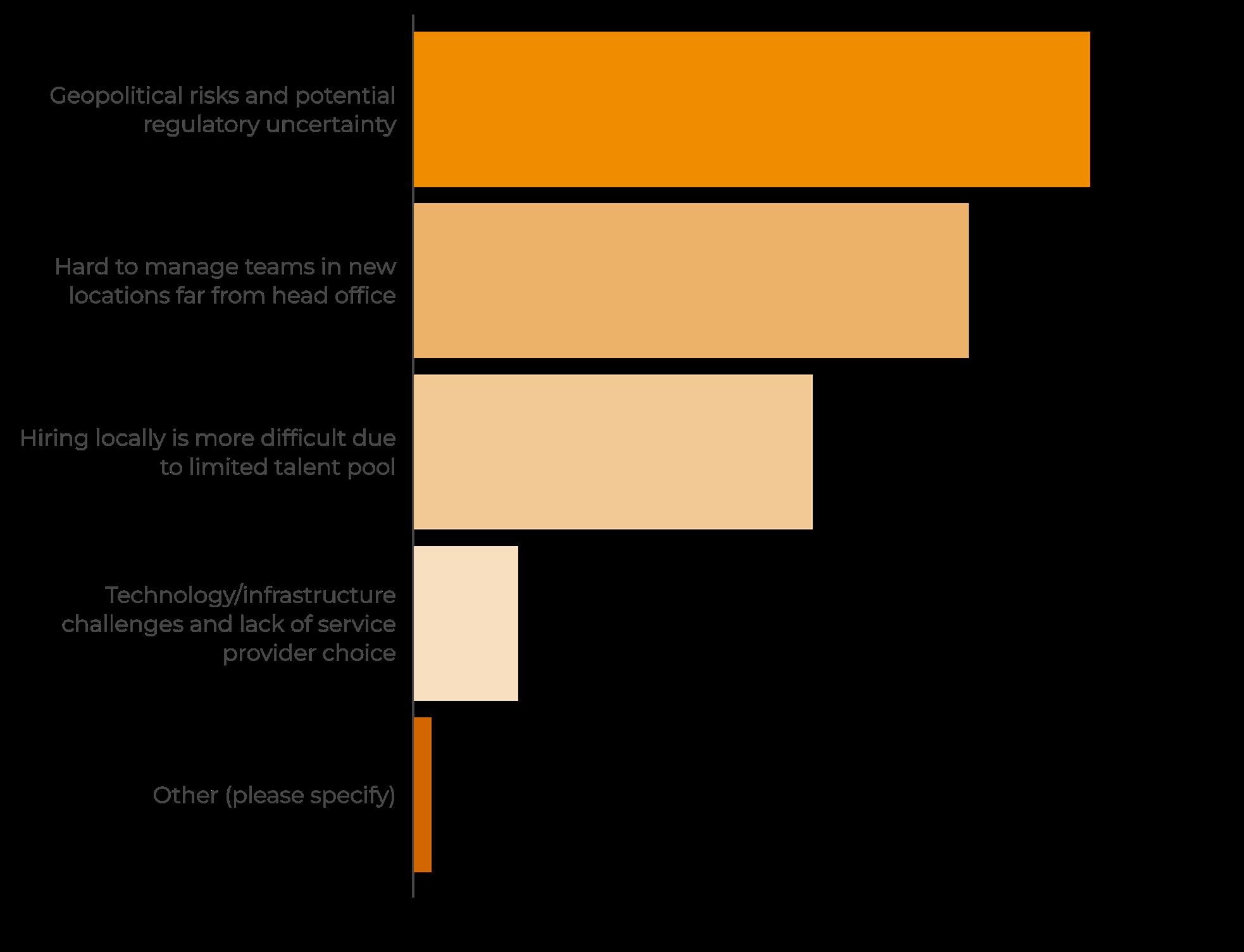


HEDGE WEEK






EXPLORING THE RISE OF NEW HEDGE FUND CENTRES
The traditional industry hubs of New York and Connecticut in America and London in Europe continue to dominate the hedge fund landscape. More hedge funds are launched, more talent assembled and more trades compiled in these hubs than any other. But beyond the financial centres of Wall Street and Mayfair, there have been rapid developments since the pandemic.
This report, sponsored by IG Prime, explores the industry’s changing global footprint. Abu Dhabi and Dubai are the most obvious examples of emerging financial centres challenging those traditional industry capitals. Hedge fund buyside talent has been rapidly moving to the U.A.E as top firms expand with new offices, while a new ecosystem of businesses has sprung up to service those firms.
The second part of this report explores activity in a region with older industry roots but which offers a unique role as an alternative sectoral hub: the Nordics. The findings in this report were informed by our survey of the Hedgeweek audience. We hope you find it valuable in navigating the context and drivers behind a changing global landscape.
Breakdown of respondents to Hedgeweek’s Q3 Hedge Fund Manager Survey by firm location, size, and approach:


A key source of data in this report is the results of Hedgeweek’s hedge fund manager survey conducted in Q3 2024. Further insights in this report were gathered during interviews in September and October 2024 with named and unnamed industry sources, and additional third-party research and intel.
U.A.E rises as sectoral hub
Parts of the Middle-East have been proving a magnet for the hedge fund industry since the pandemic. A clear 62% majority identified Abu Dhabi and Dubai as the “challenger” hubs seeing the most hedge fund growth, ahead of India, Latin America and the Nordics. Proximity to allocators was a key reason.
World’s rich on the move
Wealth continues to flow into the region, with the U.A.E forecast to see the largest net gain of millionaires, welcoming a net of 6,700 in 2024, according to the Henley Private Wealth Migration Dashboard. Globally, the number of millionaires migrating has doubled in the last decade.
Geopolitical and regulatory risk
Geopolitical turbulence and regulatory uncertainty are the two key risks to operating in a “challenger hub,” according to Hedgeweek’s survey, highlighted by 56%. That could prove an advantage to more established alternatives to the leading industry hubs, like the Nordics or Singapore, which have a longer history as hedge fund centres.
US remains dominant
While the concept of “challenger hubs” has become compelling in the post-pandemic era of global flux and renewed travel, there remains only one global hedge fund capital: the US. It remains home to an overwhelming majority of the largest firms, including all the top multi-PM platforms which have been the sector’s one key growth centre in recent years.
Abu Dhabi and Dubai have been at the forefront of industry moves beyond traditional hedge fund hubs
The United Arab Emirates hubs of Dubai International Financial Centre (DIFC) and Abu Dhabi Global Market (ADGM) have captured constant industry headlines since the pandemic, with multiple large hedge fund managers setting up offices and relocating staff.
HedgeWeek’s hedge fund manager survey backs up the headlines, with a clear 62% majority identifying Abu Dhabi and Dubai as the “challenger” hubs seeing the most hedge fund growth (see Fig. 1.1). The two placed ahead of India on 27%, with Latin America and the Nordics trailing behind.
As of September 2024, DIFC is home to offices – usually satellites, but sometimes headquarters – of more than 400 finance firms, among them 60 hedge funds, according to Salmaan Jaffery, Chief Business Development Officer for the DIFC Authority.
Aster Capital Management, Bluecrest, Eisler Capital, JNE Partners, Polen Capital Management and Tudor Capital are among the firms to have recently set up offices in Dubai. And in a relatively new phenomenon it is also seeing new fund launches, with Dubai-based Magellan Capital Holdings lined up to launch a

Fig. 1.1 Beyond traditional hedge fund centres, which “challenger” hub is seeing the most hedge fund growth?

Source: HedgeWeek Hedge Fund Manager Survey Q4 2024
$700m multi-strategy hedge fund, which would be one of the largest ever fund debuts in the U.A.E.
“DIFC’s wealth and asset management community continues to experience rapid growth which outperforms the market and differentiates our position as the region’s preferred financial centre for the sector,” said Jaffery in a statement.
It is launching the DIFC Funds Centre, which it describes as a “first-of-its-kind environment” for companies and talent looking to scale-up in the first quarter of 2025.
Tax advantages, time-zone and lifestyle have all been highlighted as drivers for this geographic diversification into the Middle-East. And the huge wealth of the U.A.E, with the Gulf home to some of the world’s largest allocators to alternatives, has advanced the case for having not only traders but business development leaders in the region.
Proximity helps, as Reda Zebdi, the former head of BlackRock’s institutional client business, who launched the Dubai office of King Street Capital Management, told HedgeWeek last year: “Having a physical presence in Dubai allows us to be closer to our investors in the region and continue fostering current relationships and building new ones.”
Proximity to different investors was highlighted as the main driver of operating in a “challenger hub” by 60% of HedgeWeek respondents, followed by regulatory and tax advantages on 40% (see Fig. 1.2). “Traders being based in different time-
“
After arriving over three years ago in Abu Dhabi Global Market to set up Florin Court’s office in the region I have seen many changes. The financial district has gone from relatively quiet to busy as more funds come and bring significant people to the region.
David Denison Senior Executive Officer, Florin Court Capital
zones” and a “different lifestyle for staff, offering more variety” were highlighted by 19% and 18%, respectively (multiple responses were permitted).
In individual survey replies, respondents identified “primary research,” “going where the talent is” and “access to new investor markets and a diversified jurisdiction.”
Similar dynamics have driven the increase in Abu Dhabi, with several hedge funds choosing to base their regional office there. Brevan Howard became the first global hedge fund to have more than 100 employees in the region, while Marshall Wace and Capula Investment Management are reported to be exploring moves. Chris Hohn’s TCI Fund Management made a high-profile move last year, opening up only its third global location in ADGM.
David Denison, senior executive officer at systematic manager Florin Court Capital, was an early hedge fund mover to Abu Dhabi. He tells Hedgeweek: “After arriving over three years ago in ADGM to set up Florin Court’s office in the region I have seen many changes in a short time.
“The financial district has gone from relatively quiet to busy as more funds come and bring significant people to the region. ADGM has been welcoming and provides networking opportunities via its Link programme and individuals working there are always looking to expand people’s local network.
“People here are also looked after outside work with world class golf, tennis and football facilities not to mention the museums.”
Fig. 1.2 What are the key advantages of starting a hedge fund (or satellite office) in a “challenger” hub? Select up to 2.

What are the key advantages of starting a hedge fund (or satellite office) in a “challenger” hub?
$500m and under: $500m-plus:

Proximity to different investors (picked by 49%)

Regulatory and tax advantages (picked by 42%)
Source: Hedgeweek Manager Survey Q4 2024. Multiple selections permitted.
6,700
Projected net inflow of millionaires in 2024, higher than any other country
100
Brevan Howard became the first global hedge fund to have more than 100 staff in U.A.E
60
Hedge funds now operate in DIFC
Hedge fund staff in Dubai now exceeds 1,000 1,000
Sources: Henley & Partners, DIFC, Bloomberg, Financial News
There are few signs of the trend reversing as the wealth migration into the region continues apace. The U.A.E is forecast to see the largest net gain of millionaires, welcoming a net of 6,700 in 2024, according to the Henley Private Wealth Migration Dashboard.
There are challenges, such as geopolitical turbulence and regulatory uncertainty which favour traditional over challenger hubs, which will be explored in the next section. One manager said cultural differences could in fact make capital raising harder. “Understanding and executing an appropriate (especially considering culture) LP capital raising strategy,” is a challenge, said another respondent.
But with the scale of the moves to U.A.E since the pandemic pretty compelling (see Fig. 1.3), the momentum continues to build.

MAX HAYDEN
Global Head of Prime Brokerage at IG Prime
Have you noticed increased industry interest in being located in nontraditional hedge fund hubs?
America’s dominance of the hedge fund industry continues, but there are now growing pools of talent and firms located in other places, some of which have grown quickly in recent years. Various factors have driven this, from growing wealth and evolving geopolitics to new regulatory and tax initiatives.
Why are Abu Dhabi and Dubai seen as the most promising hedge fund “challenger” hubs?
The U.A.E is one of our major focus areas and has been for a couple of years. Everyone in the industry is talking about Dubai and Abu Dhabi and we’re seeing headcount in both places increase, driven by new satellite offices started by big firms and, a relatively new phenomenon, new hedge funds launching there. Why? Those jurisdictions tick a lot of boxes for the modern industry. An office in the U.A.E
offers proximity to different investors, regulatory and tax advantages, a different lifestyle for staff and interesting time-zone that offers trading advantages.
Will their industry expansion continue?
I certainly expect so. It is helpful that regulation in those hubs is partly based on an established Western regulatory approach, making it more sympathetic for the larger hedge funds to look to set up offices there. The talent pool has increased massively, both in terms of hedge fund talent and service providers, from brokerage and banking to legal and audit and everything else. It has definitely reached a tipping point.
What are the biggest risks to “challenger” hedge fund hubs?
The scope for geopolitical risks and potential regulatory uncertainty can be high. The Middle-East can be quite sensitive to it, but certain centres seem to have navigated it quite well recently.
The U.A.E is one of our major focus areas and has been for a couple of years. “

While grabbing fewer headlines, smaller established industry hubs like the Nordics are offering stability and a quality alternative base to run a hedge fund.
Challenger hubs are on the rise. But the US remains dominant, with 63% of the sector seeing it as the core region most likely to drive the next phase of growth (see Fig. 2.1). The key multi-PM platforms which are behind so much recent industry growth are all based in North America, and all but Citadel (HQ: Florida) in New York.
If you take the universe of global hedge funds managing more than $10bn, half of the overall AuM is managed by firms headquartered in New York. This is followed by London, and then you have four US states – Connecticut, Massachusetts, California and Florida – before you get to Asia in the size scale.
It was interesting that a higher proportion (22%) regard APAC as more likely to drive growth than Europe (15%). They selected “Hong Kong and Singapore are growing, while Japan attracts more interest, helping the region set the pace.”
Singapore has certainly seen growth, with more firms setting up there. Millennium opened a new Singapore office in 2022, while Engineers Gate, the $2bn New York quant firm, opened one this year.
Arrowpoint Investment Partners, meanwhile, opened up this year with more than $1bn, making it one of Singapore’s largest ever hedge fund launches, with backing from Blackstone, Canada Pension Plan Investment Board (CPPIB) and a unit of Singapore’s Temasek Holdings.
Its multi-strategy approach fits the trend of Singapore becoming more of a hub for this industry growth area, while Hong Kong, which has seen more geopolitical turbulence in recent years, has more of a heritage in long/ short equity. (Though Arrowpoint has signed up an entire floor at Hong Kong’s Six Pacific Place building for its satellite office).
China’s hedge fund industry has been slow to develop and seen turbulent performance in recent months, while Japan is attracting more interest, particularly as activist strategies make more inroads into its domestic markets.
Hedgeweek’s audience was asked to name the key disadvantages of starting a hedge fund (or satellite office) in a “challenger” hub (see Fig. 2.2). This was topped by “geopolitical risks and potential regulatory uncertainty” (56%), followed by the logistical challenge of “hard to manage teams in new locations far from head office” (46%) and “hiring locally is more difficult due to limited talent pool” (33%).
The Nordics, with a strong industry heritage and established financial network, offers an example of a hub where geopolitical risk and regulatory uncertainty are unlikely to cause issues. With Stockholm are leading European hub, behind only London and Geneva in terms of hedge fund assets under management, there is already a strong ecosystem in place.
The Nordics has been a smaller but important centre for hedge funds for several years, partly due to the sophisticated trading firms and highly evolved exchanges based there, as well as pools of wealth which were early hedge fund backers,” says Max Hayden, Global Head of Prime Brokerage at IG Prime.
“It’s been a steady, reliable market for brokers to operate in, and international operators like ourselves have extended some of the services that we can supply, as the markets expand.”
Fig. 2.1 Which of the hedge fund industry’s three core regions will drive its next phase of growth?

“
The Nordics has been an important centre for hedge funds for several years, partly due to the sophisticated trading firms and highly evolved exchanges based there, as well as pools of wealth which were early hedge fund backers.
Max Hayden Global Head of Prime Brokerage at IG Prime
Fig. 2.2 What are the key disadvantages of starting a hedge fund (or satellite office) in a “challenger” hub? Select up to 2.

Analyst note: Multiple selections permitted
Source: HedgeWeek Hedge Fund Manager Survey Q4 2024
Brummer & Partners, which started the first Scandinavian hedge fund as far back as 1996 (see box out) is the largest manager in the region, backing individual hedge funds with day-one capital and running its own flagship multi-strategy vehicle.
New launches in the region continue, with Andreas Steno’s Asgard-Steno Global Macro, which deploys an AI-powered macro strategy, due to launch in Copenhagen to external capital on 1 December. The same city is home to Nicolai Tangen, founder of AKO Capital and the most high-profile hedge fund manager in the region – now overseeing investments by Norges Bank Investment Management, the wealth pool funded by Denmark’s huge oil reserves.
The Nordic hedge fund industry started 2024 with its strongest performance in almost 15 years, recording a 4.5% gain in Q1, according to HedgeNordic’s tracker. While all strategy categories performed strongly, systematic trend-following, systematic macro and equity strategies led the ranks.
Few expect the region to benefit from the kind of flows currently boosting places like Abu Dhabi and Dubai, which are attracting growing numbers of a wealth class which is increasingly mobile (see Fig. 1.3). But its stability and mature financial ecosystem should prove appealing for those seeking an alternative to the sector’s traditional core regions.
Which of the hedge fund industry’s three core regions will drive its next phase of growth?
Beyond traditional hedge fund centres, which “challenger” hub is seeing the most hedge fund growth?
North America, picked by 63%
Middle-East (Dubai and Abu Dhabi), picked by 62%
Source: Hedgeweek Manager Survey Q4 2024.
Stockholm-based Brummer & Partners established the first hedge fund in Scandinavia, partly off the back of collaboration with regulators in Sweden which helped facilitate the development of the regional hedge fund industry.
The long/short equity fund, Zenit, started trading in 1996. It lasted longer than the average hedge fund, closing in 2016 after average returns of 2.9% in its final three years.
There have been many more funds on the Brummer
platform since, spanning a range of strategies and geographies. They include Stockholm-based Lynx, one of Europe’s largest trendfollowing CTA funds, and London-based Florin Court, another systematic manager, which has established an Abu Dhabi presence (see section one).
Another notable Swedish hedge fund manager is Cevian Capital, a long-only activist firm which has made headlines for large bets in public companies including Aviva and UBS over many years.


The hedge fund industry is constantly changing. Few predicted the emergence of the Nordics as a small but significant sectoral hub beginning in the mid-nineties. And even before the pandemic it was hard to envisage the pace at which Abu Dhabi and Dubai would attract funds and talent to trade out of the region. Now, few see it reversing. This report has laid out the extent of the changes and the drivers behind them.
But for all the significance of “challenger hubs” – and the welcome role they play in challenging orthodoxies and the status quo – it is hard to argue against the dominance of North America in industry terms.
Not only is it home to the vast majority of the sector, but the huge multistrategy boom has been mainly concentrated there. The region continues to drive growth, from traditional hub states New York, Chicago, Connecticut and California to more recent financial centres in Florida and Texas.
But if the first half of the decade is anything to go by, “challenger hubs” should continue to reshape the hedge fund sector in the coming years.
CONTRIBUTORS:
Will Wainewright Head of Hedge Fund Research will.wainewright@globalfundmedia.com
Johnathan Glenn Head of Design johnathan.glenn@globalfundmedia.com
FOR SPONSORSHIP & COMMERCIAL ENQUIRIES: Please contact sales@globalfundmedia.com